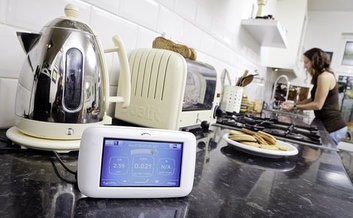
The Customer-Led Network Revolution (CLNR) project, which is part-funded by Ofgem’s Low Carbon Networks (LCN) Fund, aims to understand how the use of low carbon technologies, such as solar panels, electric vehicles and heat pumps, impact on the current electricity grid network.
The project is trialling innovative smart grid technologies on the Northern Powergrid electricity distribution network and working with thousands of customers, many of whom have homes and businesses equipped with smart meters and in-home energy monitors and low carbon technologies like solar PV, heat pumps and electric vehicle charging points. The key partners in the project are Northern Powergrid, British Gas, EA Technology, Durham University and Newcastle University.
Domestic and business customers were monitored over a two-year period to produce industry-leading research into current, emerging and possible future electricity load and generation patterns. Thousands of the customers taking part had smart meters, which provide accurate information on electricity demand and generation activity every 30 minutes. Many of them also had solar panels, heat pumps and electric vehicle (EV) charging points, providing important new data on the impact of these new low-carbon loads on local electricity networks.
The CLNR project is also investigating whether customers can be more flexible with when and how they use energy, scheduling routine household tasks like laundry and cooking outside the 4-8pm period of peak demand for electricity, for example. If customers are willing to be flexible, it could provide a cost-effective way to manage future energy challenges.
“These latest results from the CLNR project provide a comprehensive suite of up-to-date data relating to different electricity customer profiles in the UK” said Preston Foster from Northern Powergrid, the electricity distribution network operator leading the project. “The emergence of new low-carbon loads has required network operators to re-evaluate the design and operation of our networks to ensure we can continue to provide a safe and secure supply of electricity. We also recognise that the way people consume energy is changing, with more people working from home, ever-changing household structures and the popularity of new entertainment and Internet enabled devices, such as PCs, laptops, tablets, games consoles and smart TVs.”
Mr Foster added that the data will be used to help improve network efficiency and support the uptake of low carbon technologies without the need for large-scale upgrades to network infrastructure.
The CLNR has also actively trialled new commercial arrangements and interventions with domestic and small business customers. The new data includes results from the project's time of use tariff trials, where customers were incentivised to use electricity outside of the 4-8pm peak and automated schemes with solar PV owners.
The learning from these trials, together with qualitative research conducted by the University of Durham, is helping uncover the extent to which customers will accept new propositions for flexibility, including restricted hours tariffs to direct control.
The new data is available to download on the project’s website and the learning is also being shared with all UK electricity network operators to help find cost-effective ways to support the country’s transition to a low-carbon economy.
For additional information:

